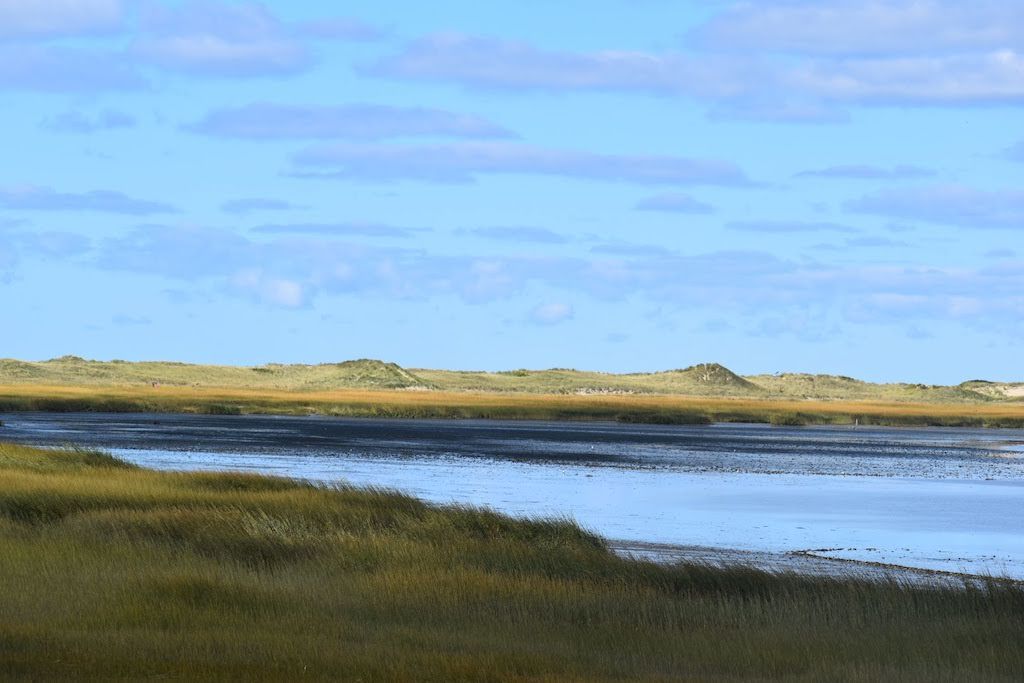When the stress of tech startups gets too high, one of my favorite things to do is to go to Cape Cod. There is nothing like driving across the bridge, looking at the big blue sky, and taking a deep breath of salt air to lower my blood pressure. Many people refer to this as "Cape Time": when the world around you suddenly slows down so you can enjoy it again.
While there are many activities I love doing on the Cape, hiking has become a regular part of my routine. I love the escape of finding new locations to explore with my camera, Jeep and friends or family. In addition to enjoying the landscape, flora, and fauna, I love connecting to the history of a place. Today I thought I'd go off the grid from my usual tech entrepreneur topics to take you on one of my favorite hikes: Great Island in Wellfleet.
My Cape Connection
I have to thank my mother for my love of Cape Cod. After her six kids grew up and moved away, she began coordinating annual summer vacations as a reason to bring her family back together. While she spent her entire life in Central New York, she was a New Englander in spirit if not geography. She was passionate about travel, food, meeting new people, and having new experiences. Our first three extended family vacations were on Cape Ann, New Hampshire and Rhode Island - which are remembered respectively in my family for me sinking a sailboat, rain, and a home owner with far too many rules. But for our fourth year, she chose a rental on Cape Cod, which proved so successful we never again looked anywhere else. Even as her family swelled to include six spouses and 16 grandkids, she continued to rally us to get together for a week each year on Cape Cod. While she is no longer with us, we have continued this tradition now for almost three decades, making Cape Cod a special place for my entire extended family.
The Hike
Great Island is located in the town of Wellfleet, in an area called the Outer Cape. If Cape Cod is shaped like an outstretched curled arm, the Outer Cape is the forearm. It is the most remote area of the Cape, located 30+ miles off the coast of Massachusetts. It is also home to the Cape Cod National Seashore, one of the great gems of our national park system.
About three miles west of the Wellfleet town pier, at the end of Chequessett Road, is a thin isthmus called “The Gut” that connects to Great Island. While technically not an island, this rural area provides one of the longer and more diverse hikes on the Outer Cape. There are 9+ miles of trails that go through forests, along beaches, and past a salt marsh. The trails are staggering in their natural beauty, bordering Cape Cod Bay on the west and Wellfleet Harbor on the east (pictures below). You can also follow the signs to visit the ruins of an old 18th century whaler tavern at the southern shore as well. While the trails are well marked, I would recommend having a map ready on your phone, since my first map-less trip resulted in an accidental 4+ hour marathon.
Slide Show
The History
I know not everyone has as much passion as I do for history, so bear with me here. Wellfleet was first settled by a Native American tribe called the Nausets over 4,000 years ago. The Nausets were a peaceful tribe that farmed and fished Cape Cod without interruption until the arrival of the first Europeans. After the first permanent European settlement at Plymouth in 1620, the Nauset population began to gradually decline due to disease and resource competition. In 1644, several families from the Plymouth colony "purchased" most of the Outer Cape from the Nausets, which sadly would represent the beginning of the end of the Cape as the home of Native Americans.
The name Great Island derives from the fact this was an island in the 17th and 18th centuries. While Wellfleet is best known today for its oysters, whaling was its most important industry in this era, with local whale oil lighting the lamps of homes all across the colonies. Whales were so abundant that it was common to have pods swim right into Wellfleet Harbor, where they would be massacred by whaling boats. The hills and bluffs of the island were used as lookouts for sighting pods, resulting in a steady stream of sailors rowing their dinghies over to keep watch.
In the late 17th century, a local entrepreneur named Samuel Smith decided he might capitalize on the traffic to the island by building a tavern. His tavern is estimated to have been open from about 1690 to 1740, and was home to a thriving business. The artifacts from a 1970 archeology dig have been removed, and today there is not much left of the tavern other than scattered stones of the foundation. I like to think of Smith Taven as a "picks and shovels" startup for the whaling industry. If SPACs were around then, maybe they would have gone public and still be around today.
Additional Tips
This area is popular with mushroom hunters, so don't be surprised to see people with baskets and knives walking through the woods. Confession: I was startled my first time at seeing someone following behind me with a big long knife. 🤭 Another enjoyable thing to do is to pack a picnic basket and find a stretch of beach all to yourself. The island and "The Gut" are surrounded by some beautiful beaches.
